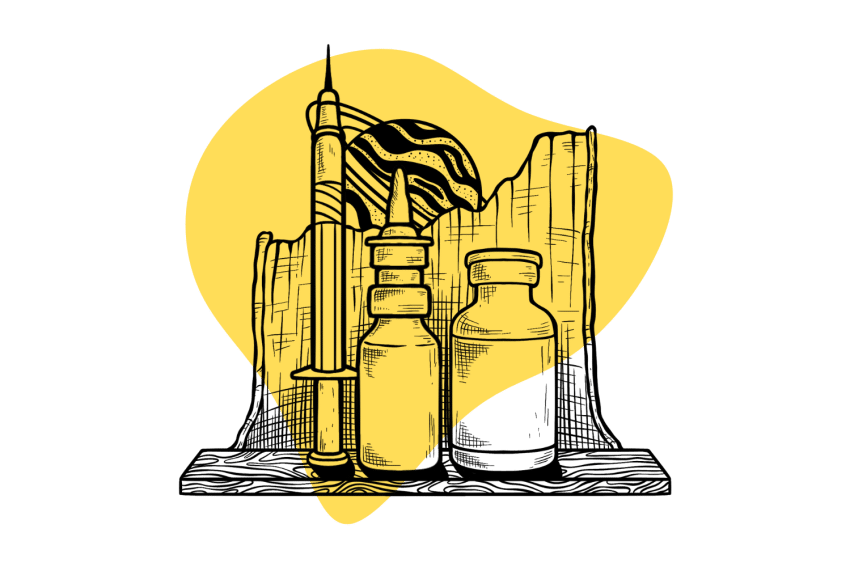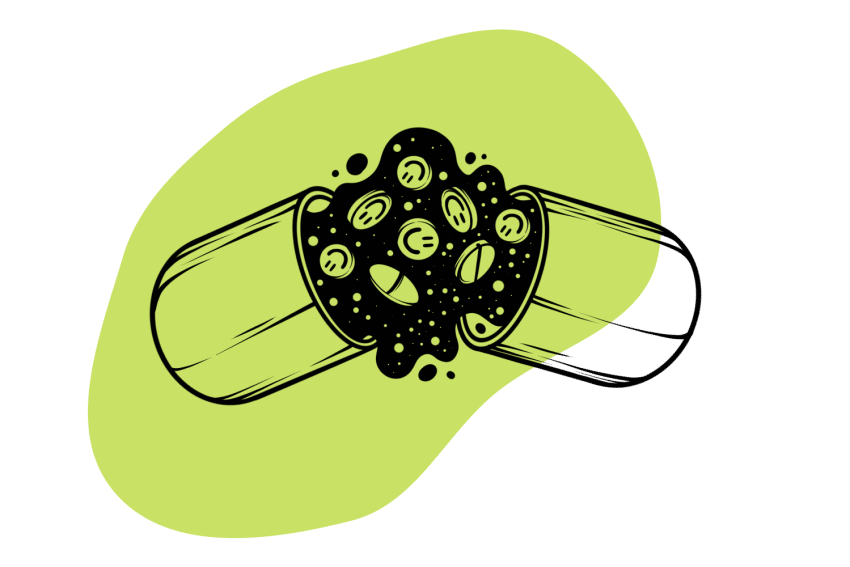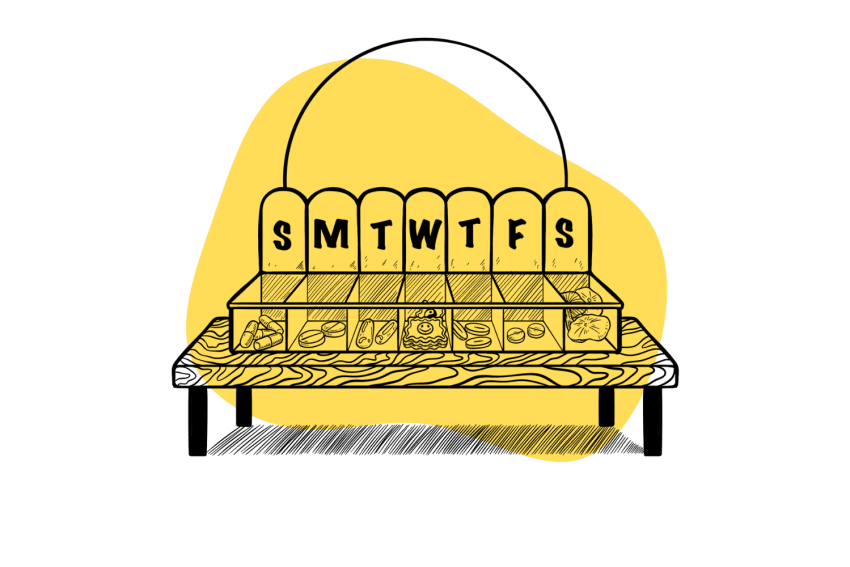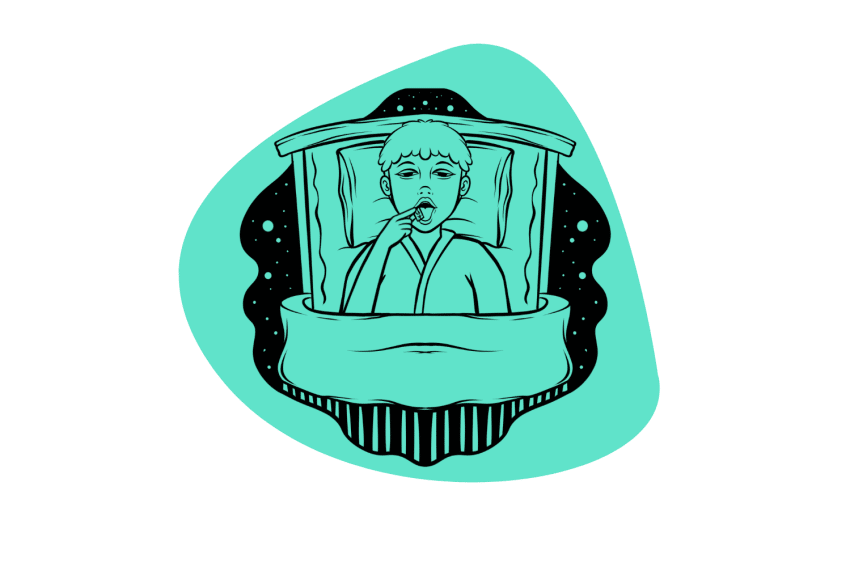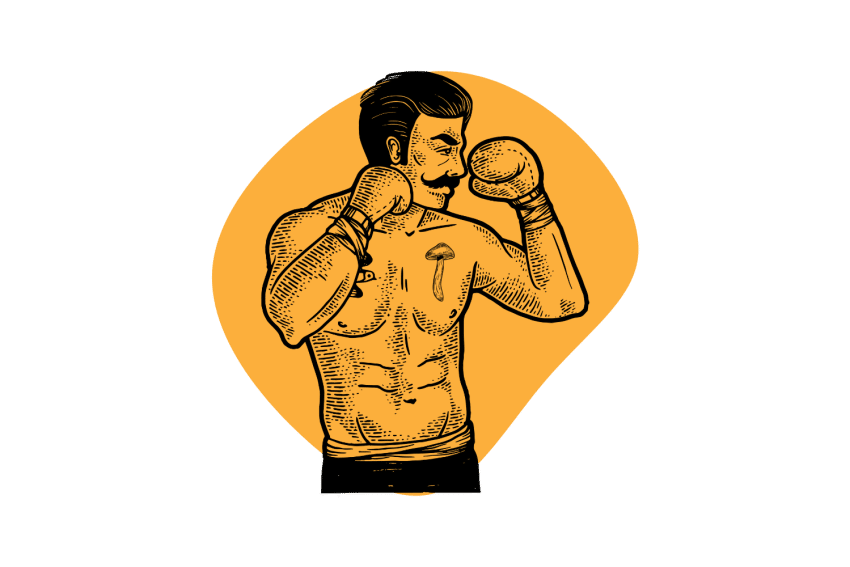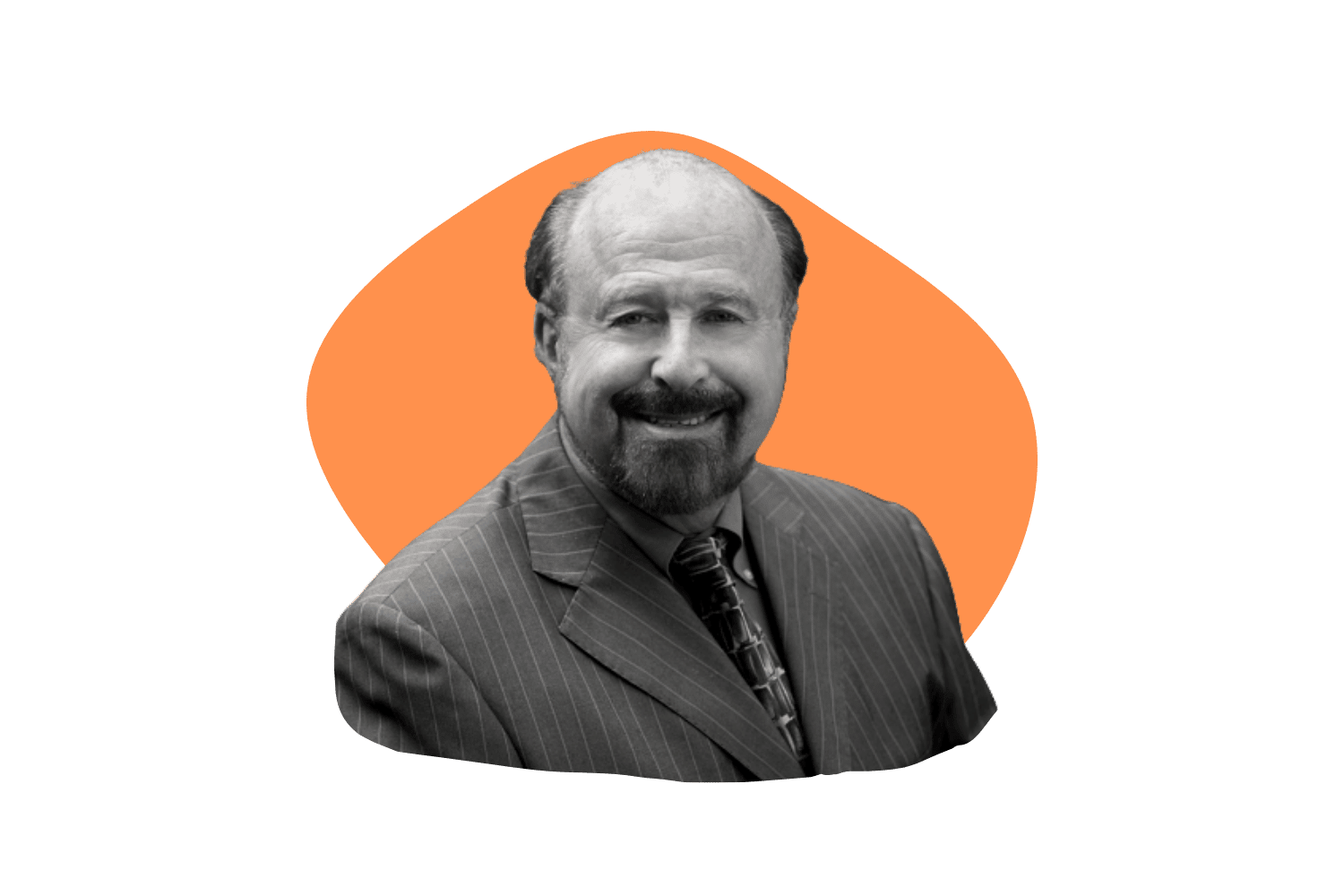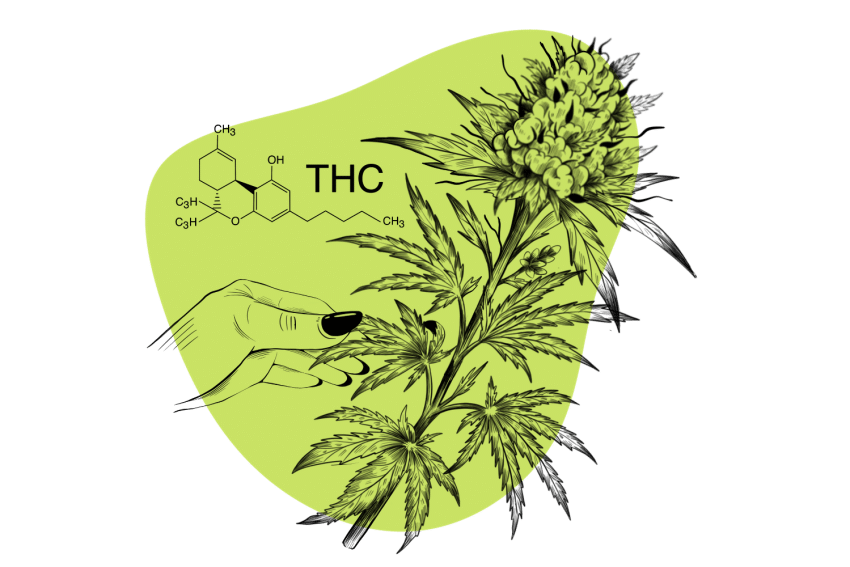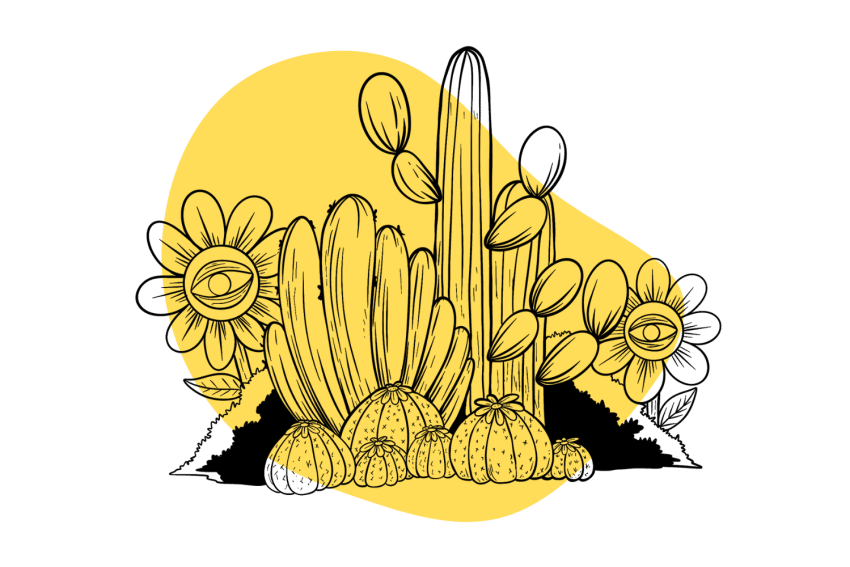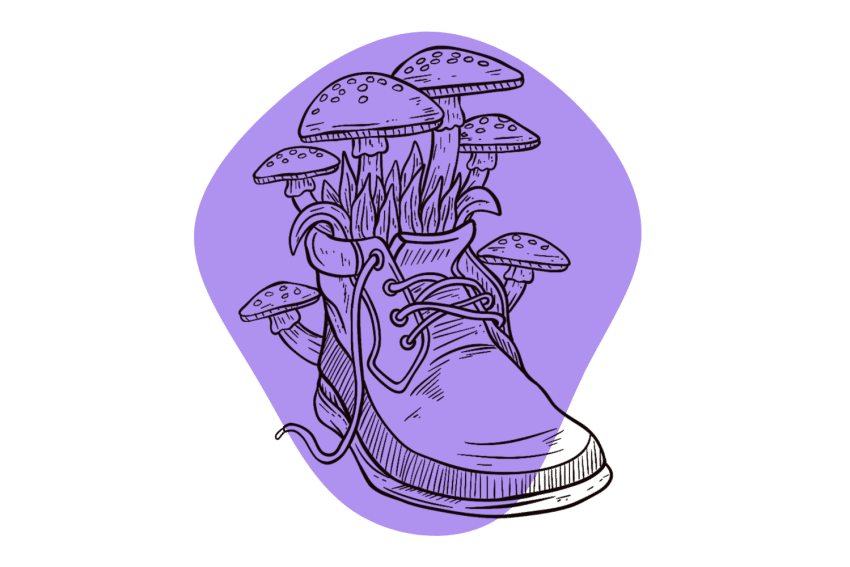Microdosing Marijuana: A New Trend in the Cannabis Community
Some studies suggest small, sub-perceptual doses of THC could support sleep 🥱 chronic pain 😧 focus 🕵️ and creativity 🎨
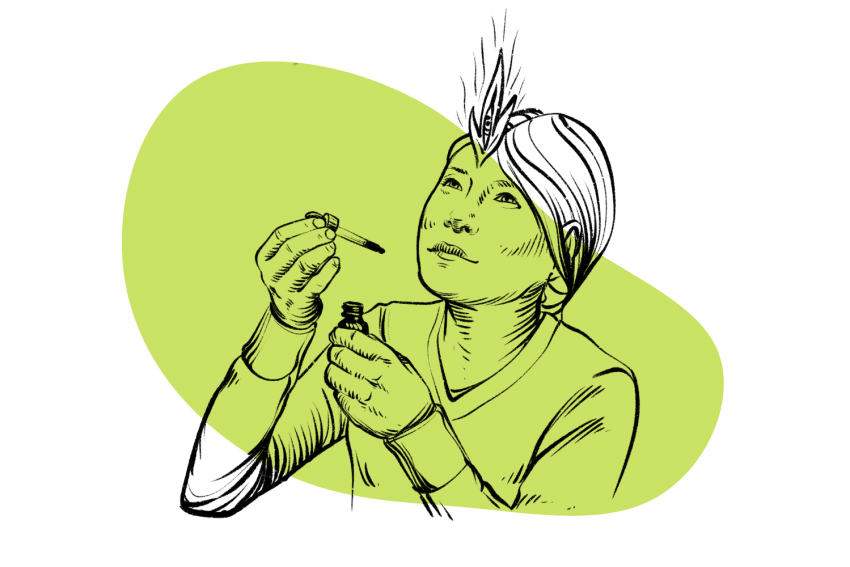
Although illegal in many places, microdosing psychedelics has gained popularity for its rumored benefits for creativity, productivity, and overall well-being.
Microdosing refers to taking tiny amounts — or sub-perceptual doses — of psychoactive compounds so that it doesn’t get you high.
Even in small doses, many psychoactive substances subtly impact the brain, influencing creativity, focus, and mood.
The most common substances taken in microdoses for biohacking are LSD (lysergic acid diethylamide), mescaline (peyote and San Pedro), and magic mushrooms (psilocybin and psilocin).
Some people are experimenting with microdosing Cannabis sativa, too — specifically delta 8 THC or delta 9 THC, for similar benefits.
In this article, we’ll go over how to microdose cannabis, the reported benefits of this practice, and other ways to get the health benefits from cannabis flower without getting high.
What Are The Active Components Of Cannabis?
The Cannabis sativa plant has a long history of use in many cultures worldwide, from medicine to divination.
Cannabis contains chemical compounds in its resin glans called cannabinoids — the most notorious is delta-9-tetrahydrocannabinol (THC), known for producing the high from marijuana use.
However, there are over a hundred cannabinoids in the cannabis plant that are studied for their reported medical benefits, including cannabidiol (CBD), cannabigerol (CBG), cannabinol (CBN), and other forms of THC.
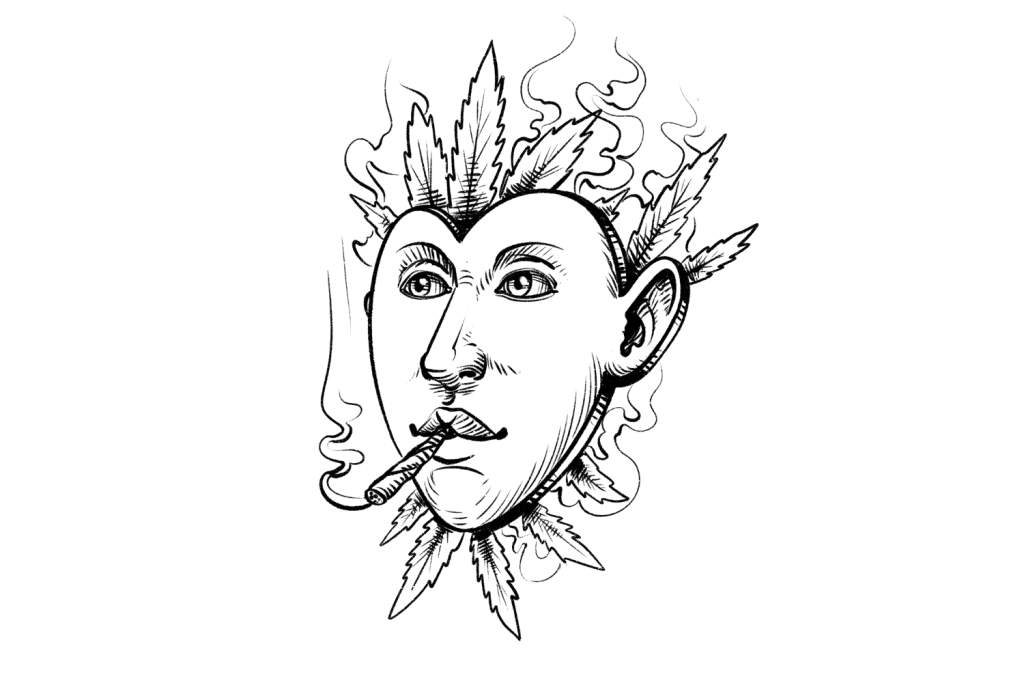
There are also newer cannabinoids made by altering the chemical structure of THC or CBD, such as hexahydrocannabinol (HHC), THCP, delta 8 THC, delta 10 THC, and THC-O.
When people talk about cannabis microdosing, they typically talk about microdosing THC, as it has the most psychoactive effects. This includes all forms of THC, including delta 8, delta 9, delta 10, HHC, THCP, and THC-O.
Benefits of Microdosing Marijuana & THC
THC and other cannabinoids in cannabis have potential health benefits through interactions with the endocannabinoid system, which regulates vital functions, including stress, pain perception, the immune response, and more [7].
Most of the cannabis research involves using higher doses — not microdoses. But one low-dose study showed an improvement in stress management and sleep of THC [8].
The majority of information we have about the reported benefits of microdosing cannabis comes from self-experimentation — it’s not very scientific, but the accounts are still fascinating.
Microdosing THC For Pain
Research on THC for pain has been conducted with higher doses ranging from 2.5 mg to 30 mg and more. At these doses, the psychoactive effects of THC are noticeable.
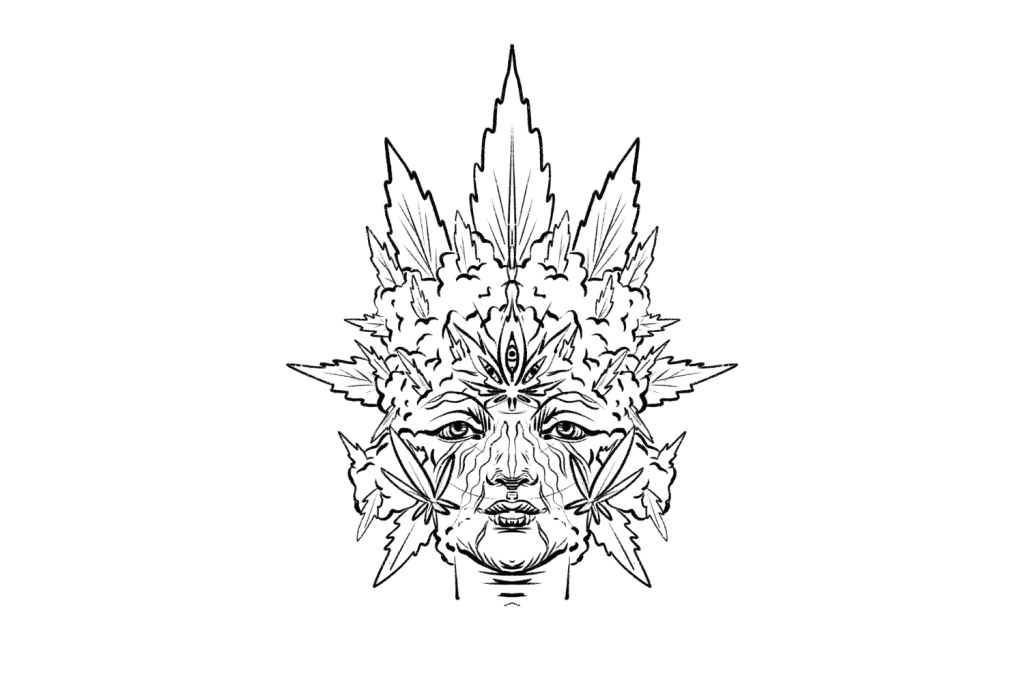
One of the ways that THC is believed to work to reduce pain is by modulating the release of neurotransmitters that regulate pain when binding to cannabinoid receptors in the brain.
Microdosing THC For Sleep
If there’s one area in which taking microdoses of THC may particularly benefit, it’s sleep.
Still, there’s not much evidence to show that microdoses specifically are an effective sleep aid, but low doses of THC are typically more effective for relaxation. At higher doses of THC, the effects tend to be more stimulating.
Microdosing THC For Focus
One of the main reasons people look to microdose psychoactive compounds is to reap the drug’s benefits without the high affecting their routine. Some people claim that microdosing THC helps to improve their focus. Still, there are also just as many people who say there’s no effect at all.
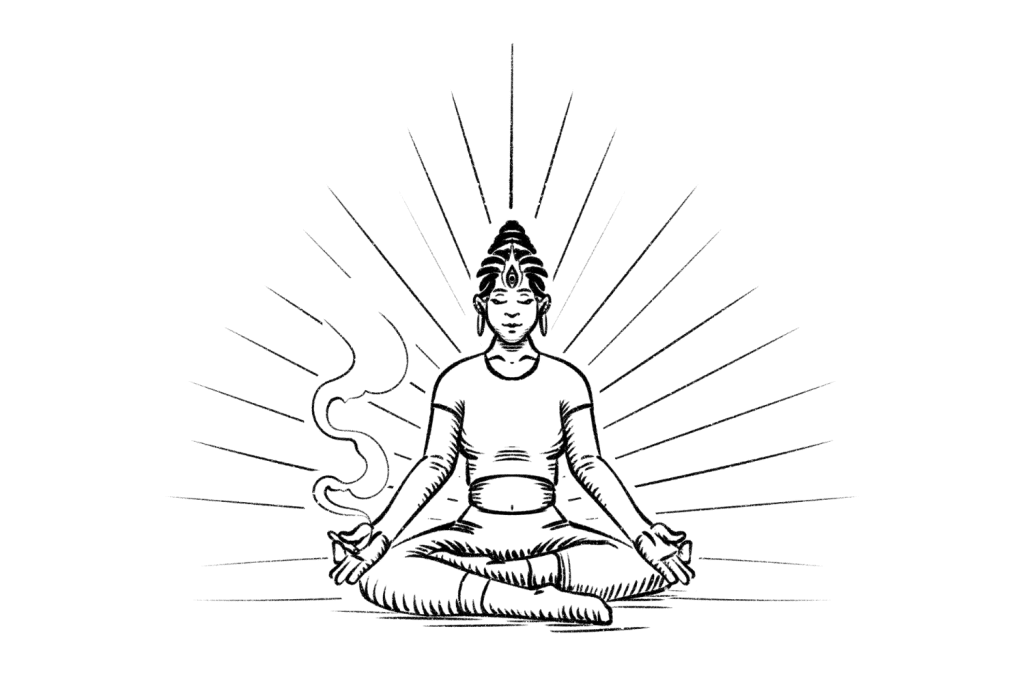
Microdosing THC For Creativity
THC is often used to enhance creativity at higher doses, but doing this can often temporarily impair cognitive function, which isn’t ideal for creative work. However, the verdict on microdosing THC for creativity is just as mixed as its use for focus.
Microdosing THC: Easiest Methods
There are several delivery methods for microdosing THC.
The best approach to microdose marijuana and THC will depend on the individual’s preference. Still, we’ll give you a brief overview of the most common ways to microdose THC.
Edibles (Gummies)
Cannabis edibles such as THC gummies, cookies, and brownies are popular consumption methods because they’re delicious and deliver pre-measured doses of THC, which are great for standard doses — but unless you find cannabis edibles that are formulated with microdoses of THC, it may be tricky to measure a small amount accurately.
You can cut THC gummies into smaller pieces to get closer to a microdose with a clean, sharp knife.
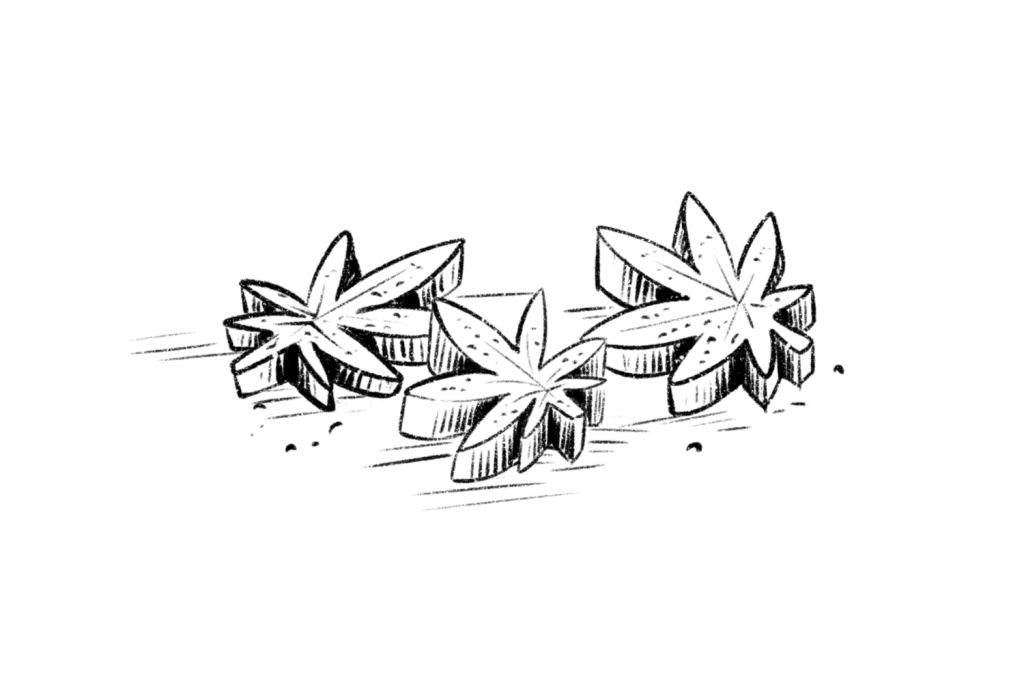
To calculate the dose, look at the total amount of THC per gummy and divide the total amount of THC by your ideal microdose.
For example, if you have a 4 mg THC gummy and want a 1 mg dose, you’ll cut the gummy into four equal pieces.
In another example, if you have a 25 mg delta 8 THC gummy, you’ll have to cut it into 25 pieces to get the same dose. The easiest way to do this is to cut it in half, then in half again, then again, and the final small piece should be cut into thirds for roughly 1 mg doses.
Tinctures & Oils
THC can also be consumed as a tincture, a liquid extract typically taken by placing a few drops under the tongue, where it’s absorbed into the bloodstream through the microcapillaries lining the mucous tongue membrane.
This method is fast, cost-effective, and easier to custom-tailor doses drop by drop — though it might not be the tastiest way of consuming cannabis.
Most cannabis tinctures list the concentration of cannabinoids on the label in mg/mL, which can help you accurately determine how many drops of a product you’ll need to administer a microdose.
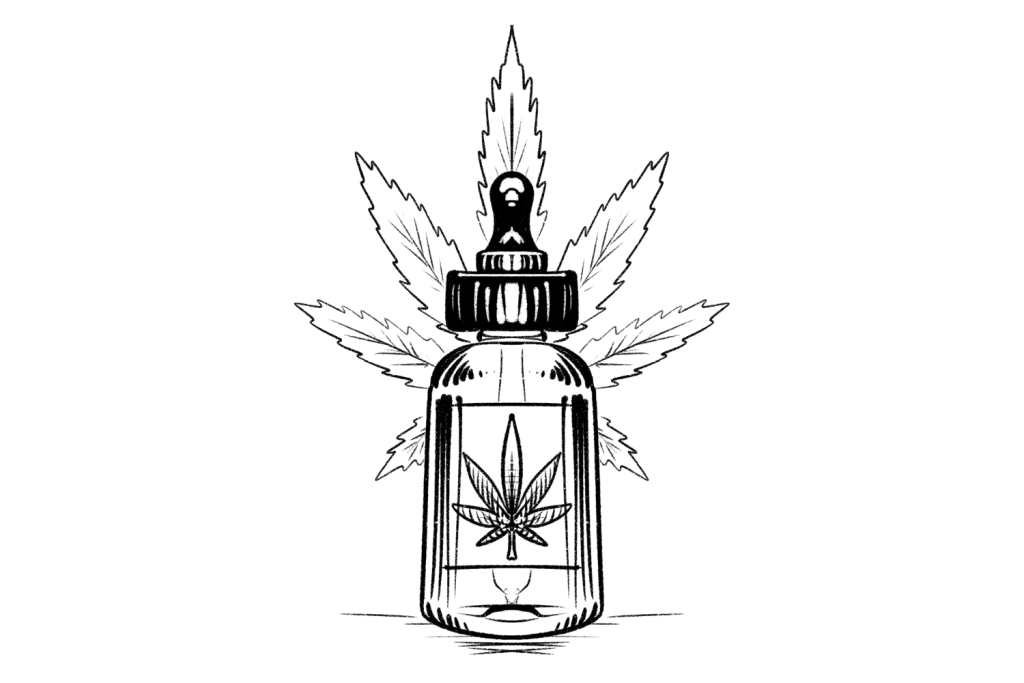
Let’s say you have a 200 mg THC | 1 oz (30 mL) bottle of tincture — this is a standard bottle size.
In this instance, in 1 mL of product, you’ll get approximately 6.6 mg of THC, a typical psychoactive dose.
Formula: 200/30 = 6.6 mg/ mL.
Most tincture bottles have a dropper that administers 1 mL (26 drops with one full squeeze). One drop of this tincture delivers about 0.25 mg of THC.
Formula: 6.6/26 = 0.25 mg.
To reach a microdose of 1 mg THC from a 200 mg/oz bottle of tincture, you’ll need about 4–5 drops.
Vaporizers
THC can also be smoked or vaporized (which is easier on the lungs than lighting up a joint).
Inhaling THC is the fastest way to feel the effects, but it also makes it easy to overdo the doses.
With concentrated, pure cannabis extract vape pens, you could probably get away with a microdose by taking just half a puff.
This is not an exact science because the amount of THC dosed from each puff depends on the wattage of the vape heating coil, how long you hold the inhale, and your lung capacity. Vaping can certainly be used to microdose THC, but it’s probably the most difficult method of them all.

For e-liquid pen users that dilute the cannabis (THC) extract with a vape juice formula, you can get lower doses by diluting the solution with more vape juice, changing the ratio of cannabis extract to vape juice. The lower the concentration of THC, the easier it will be to microdose via vaping.
How Much is a Microdose Of Cannabis (Delta 9 THC)?
Since there isn’t enough research looking at the precise milligrams of THC needed to achieve the benefits of microdosing cannabis (assuming there is any), there’s no simple answer to how much THC is required to effectively microdose cannabis.
The point of microdosing is to take sub-perceptual doses so that it doesn’t get you high.
Typically, most people experience the psychoactive effects of THC with 5 mg. At 10 mg, the effects of THC are pretty strong, and the general guidelines for microdosing psychoactive substances are somewhere between 10-20% of the standard dose.
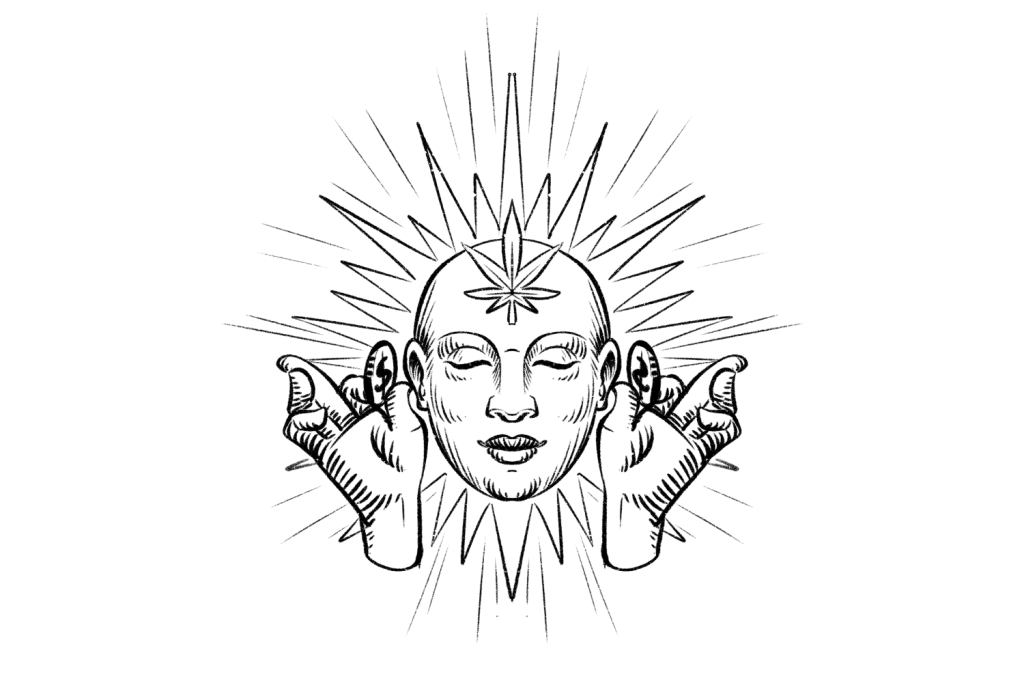
While delta 9 THC is the most concentrated cannabinoid in marijuana plants and has the most medical marijuana research, other forms of THC exist. And some people use these different variations of THC in varying doses for their microdosing regimen.
How Much is a Microdose of Delta 8 THC?
Delta 8 is an isomer of the delta 9 THC molecule found in smaller concentrations in the cannabis plant.
It’s called delta 8 because rather than having the double carbon bond on the ninth chain, it’s located on the eighth chain, which may alter its effects on the body ever so slightly.
Compared to delta 9, delta 8 is roughly half as potent and less psychoactive and is rumored to produce a more relaxing and clear-headed high, making delta 8 products a popular choice for many first-time cannabis users.
Because high doses are required to achieve the same psychoactive effects as delta 9, many people find delta 8 more forgiving when experimenting with finding their ideal microdosing dose.
While there’s no exact science as to how much delta 8 you should take for a microdose, the typical microdose for delta 8 THC is anywhere from 1-2 mg.
How Much is a Microdose of Delta 10 THC?
Delta 10 is a rare minor cannabinoid, even less common than delta-8.
Because it occurs in such small concentrations in the cannabis plant, there’s not as much research on this cannabinoid. However, its thought to be even less psychoactive than delta 9 THC and delta 8.
Microdosing delta 10 THC starts between 1-4 mg because it’s not as potent as regular delta 9 THC.
How Much is a Microdose of HHC?
Hexahydrocannabinol (HHC) is a naturally-occurring cannabinoid very similar to THC. The only difference is that HHC is hydrogenated, which means it contains no double bonds in its base ring structure. Compare this to delta 8, delta 9, and delta 10 THC, which all have just one double bond (in different positions).
Hydrogenating cannabinoids involves saturating the cannabinoid with hydrogen atoms in a lab for a more shelf-stable compound. While most HHC products are synthesized from CBD or THC, HHC can also be found naturally in cannabis plants in trace quantities.

HHC produces similar effects to THC, but it’s only about 80% as potent as delta 9 THC, placing it somewhere between THC and delta 8 but with more energizing properties.
A recommended starting microdose for HHC is 1-2 mg.
How Much is a Microdose of THCP?
THCP stands for tetrahydrocannabiphorol. It’s a recently discovered cannabinoid found in select strains of cannabis plants with a very similar structure to delta 9 THC but with significantly stronger effects. Some studies have found as much as 33 times the receptor binding potential of this cannabinoid compared to delta 9 THC.
Because of its recent discovery, little research is available on this cannabinoid. However, anecdotal reports claim that microdosing THCP is similar to microdosing LSD. You only need about 80 micrograms of this stuff for a psychoactive dose, so a microdose would fall somewhere in the ballpark of 5–10 micrograms, which is minuscule and very hard to dose accurately.
We imagine that as the popularity of THCP grows, we can expect to see blotter tabs of THCP — similar to how LSD is popularly consumed.
Can You Microdose CBD?
CBD or cannabidiol is one of the main cannabinoids found in cannabis — though it’s more concentrated in hemp crops that are selectively bred to produce CBD products.
In theory, you can microdose CBD.
But there isn’t much evidence to support that taking small doses of CBD improves focus, productivity, or creativity, and it might be pointless altogether to take CBD in microdoses.
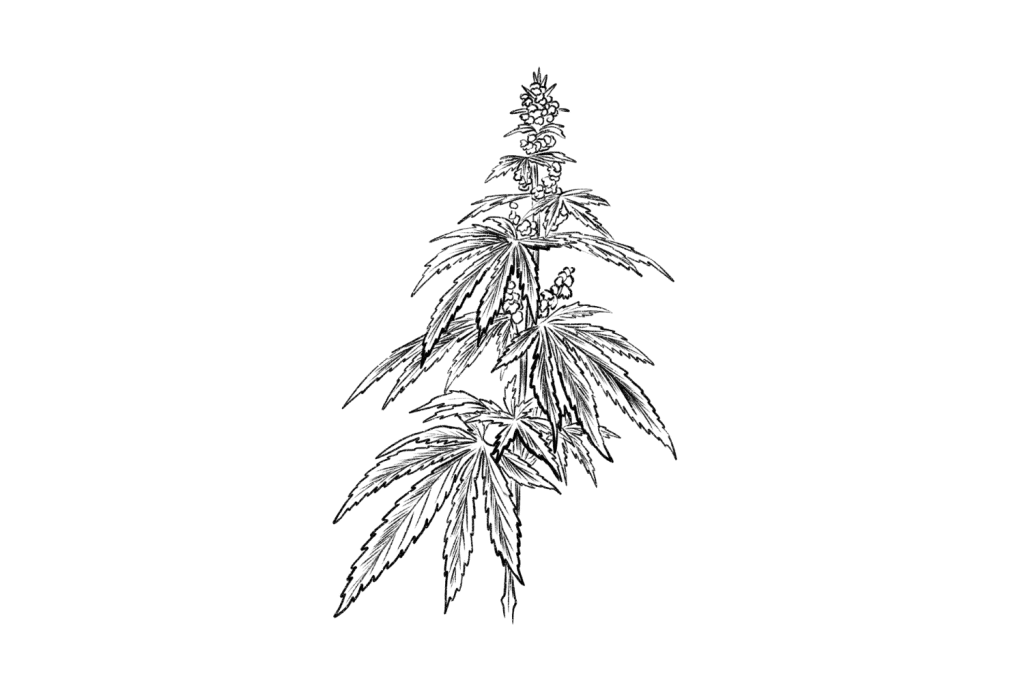
You don’t need to microdose CBD to avoid getting high because CBD doesn’t produce intoxication, which is why hemp-derived CBD products are legal and have become so popular to support a wide range of health benefits from sleep, mood, motivation, pain, and so much more in the last several years.
Besides, most of the research on the benefits of CBD investigates doses ranging from 20-50 mg. We couldn’t find any credible sources looking at the possibilities of microdosing CBD for wellness.
How Does THC Work In The Body?
Cannabinoids primarily interact with the endocannabinoid system (ECS), a complex network of receptors and chemical messengers (endocannabinoids) regulating many bodily functions.
Functions of the endocannabinoid system include:
- Appetite and digestion
- Immune system function
- Memory and learning
- Mood regulation
- Pain perception and management
- Sleep
THC is the primary psychoactive cannabinoid in the cannabis plant.
It’s also nicknamed the “spirit molecule” and bears a very similar structure to a chemical in the endocannabinoid system called anandamide or the “bliss molecule.”
Anandamide is a cannabinoid that regulates pleasure, motivation, and pain by modulating the endocannabinoid system.
When anandamide levels are high, it can lead to euphoria and a sense of well-being.
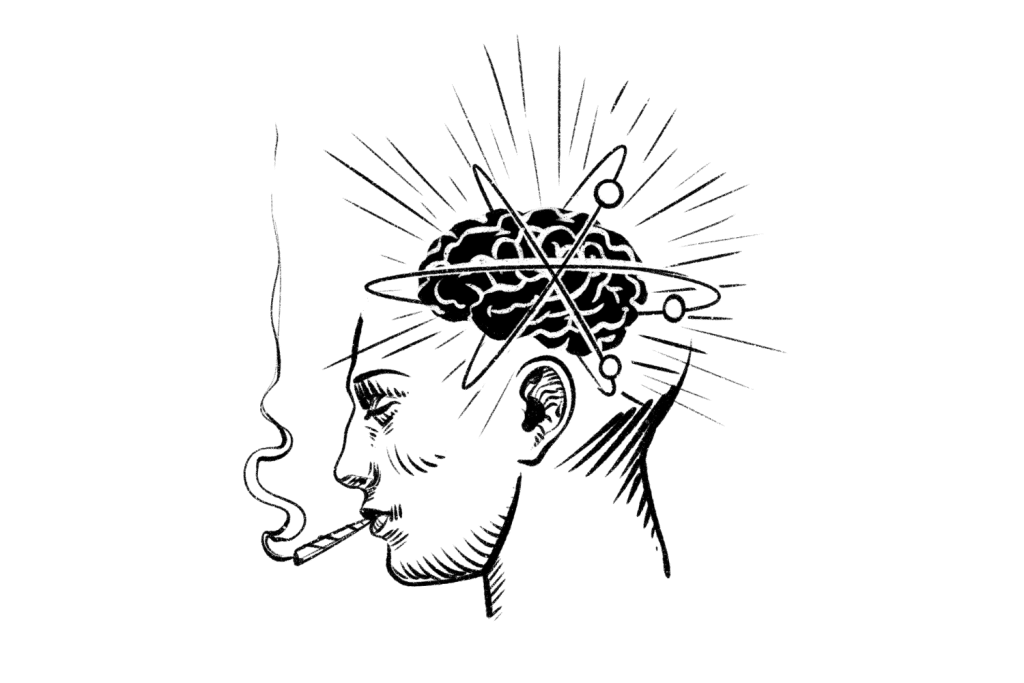
THC is compared to anandamide because of its interactions with the same cannabinoid receptors as anandamide in the central nervous system, causing changes in mood, cognition, and behavior.
It’s worth noting that THC and other cannabinoids can produce varying effects in individuals due to many factors, including the individual’s age, weight, genetics, dose, and method of administration.
In some people, THC produces euphoria and deep relaxation, but it can also cause paranoia, anxiety, and panic attacks in others.
Most of the time, the correct dose and setting are needed to ensure someone has a pleasant experience with regular psychoactive doses of THC.
Risks Of Cannabis Consumption
Cannabis is a psychoactive natural substance used medicinally and recreationally.
And while the active substances aren’t toxic and seem to be tolerated well in healthy patients, there are always risks involved in consuming any substance that can alter your mood and perception.
Legal Risks
In many places, the possession, use, and distribution of cannabis are illegal, and the use of cannabis can carry significant legal consequences. As with any drug, it’s important to familiarize yourself with the laws and regulations in your area on the possession and use of cannabis before purchasing and using it.
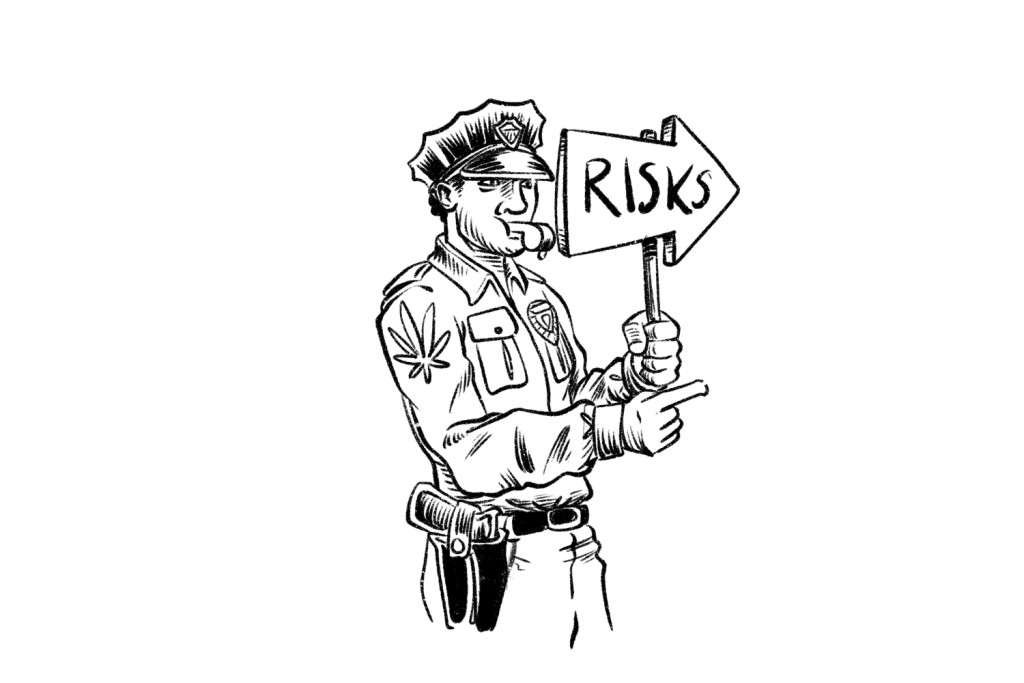
Cognitive Impairments
THC (typically in higher doses) can impair cognitive function, including memory, attention, and judgment. These impairments can last several hours after using marijuana, increasing the risk of accidents and injuries.
Addiction
While cannabis isn’t physically addictive, some people who use marijuana regularly may develop a psychological addiction to the drug, leading to destructive behaviors.
Failing A Drug Test
Taking even sub-perceptual doses of THC can put you at risk of failing a drug test, so if you have to take part in regular drug testing for school, work, parole, or insurance, we recommend that you stay away from THC altogether, as it can take several weeks for your body to expel all traces of THC metabolites from your system.
Mental Health Risks
Although rare, the psychoactive effects of marijuana are possibly linked to an increased risk of developing certain mental health disorders, such as psychosis and schizophrenia. Marijuana use may also exacerbate symptoms of existing mental health disorders.
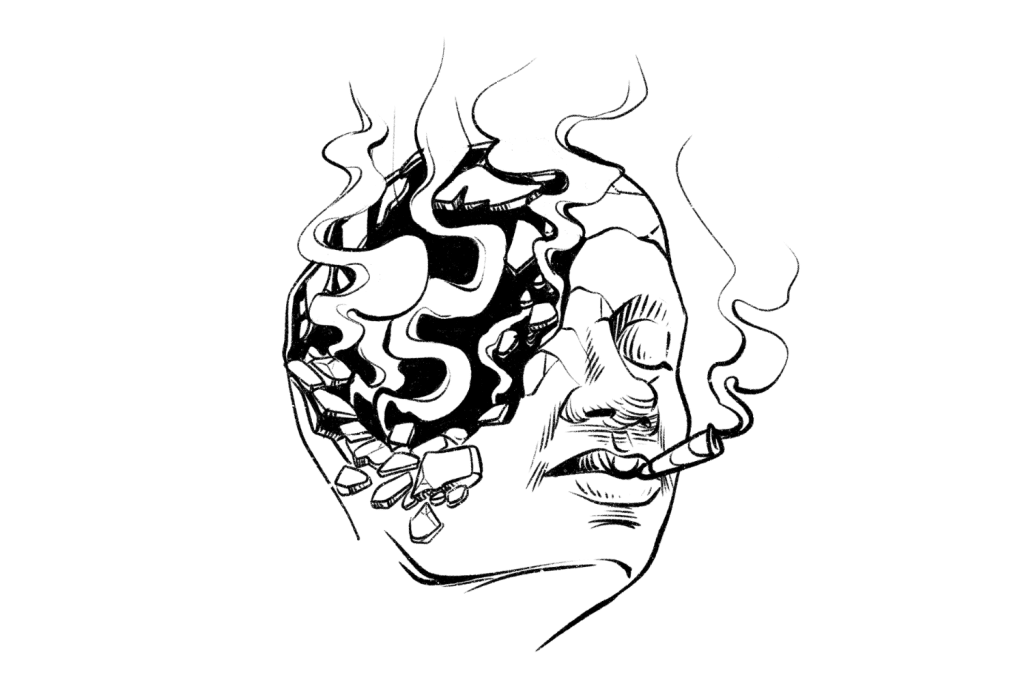
Physical Health Risks
Cannabis use may be associated with various physical health risks, including an increased risk of respiratory problems (when smoked or vaped). Cannabis use during pregnancy may also have adverse effects on fetal development.
What Are The Other Benefits Of Cannabis (THC)?
Many people consume cannabis medicinally and recreationally for various reasons, including pain management, relaxation, sleep, stress, and recreational highs in social and personal settings.
Evidence suggests cannabis offers the following benefits:
- Pain relief — CBD and THC may effectively reduce pain and improve sleep in people with chronic pain, such as neuropathic and cancer-related pain [1].
- Reducing anxiety — Some research suggests that cannabis compounds may effectively reduce anxiety and improve mood in people with anxiety disorders [2].
- Improving sleep — Cannabinoids such as THC, CBD, and CBN may improve sleep in people with insomnia or other sleep disorders [3].
- Reducing inflammation — A large area of research for cannabis is its inflammatory-fighting properties. Cannabinoids, including THC, have anti-inflammatory effects and may effectively reduce inflammation in people with certain medical conditions, such as Crohn’s disease and multiple sclerosis [4].
- Reducing muscle spasms — THC may effectively reduce muscle spasms in people with multiple sclerosis and other neurological conditions [5].
Cannabis has many potential benefits. However, the intoxicating effects of THC make it an undesirable compound for many, which is why some people experiment with lower doses to achieve some of the benefits of cannabis without getting high.
It’s worth noting that the research on the therapeutic effects of marijuana is based on higher doses (and not microdosing).
The Benefits Of Raw Cannabis
Another way people are getting around the intoxicating effects of marijuana is by consuming raw cannabis buds, which are available in tinctures, capsules, and juices.
THC and other cannabinoids exist in the cannabis plant in different forms. THC in raw cannabis is THC-a or tetrahydrocannabinolic acid, which isn’t psychoactive. You can eat heaps of raw cannabis buds without getting high.
When the plant is heated (like when you light a joint), THC-a undergoes decarboxylation. The acidic chain breaks off to create THC, which is the ideal molecular shape for binding to endocannabinoid receptors that produce feelings of pleasure.
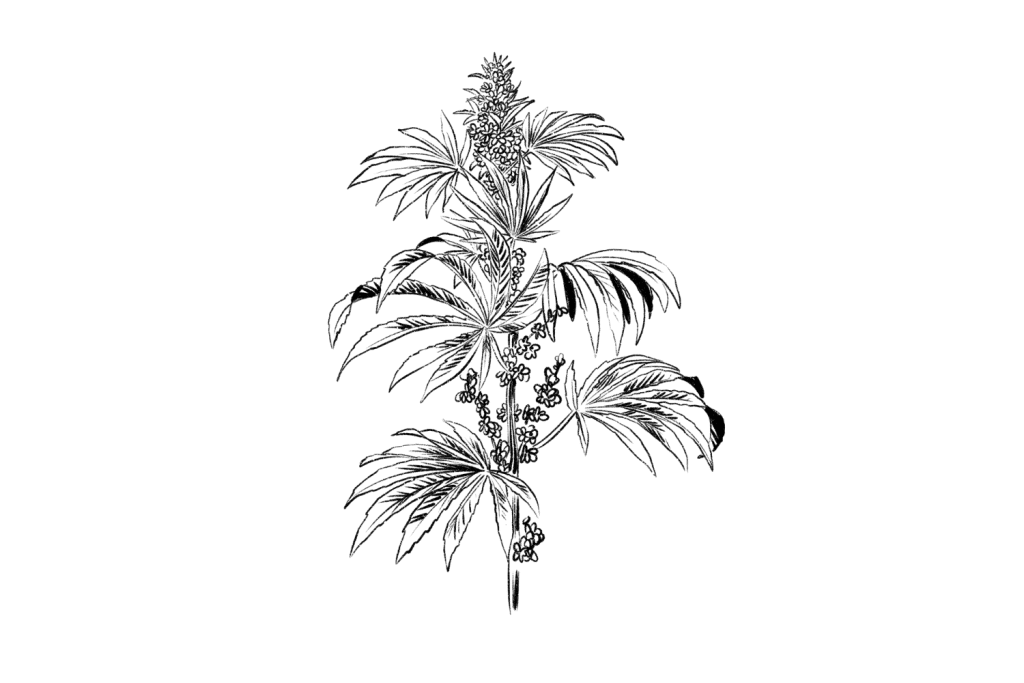
The most abundant raw cannabinoids, THC-a and CBD-a, are being studied for their unique set of potential benefits separate from THC and CBD [9].
So, while you won’t get the classic “high” from consuming raw cannabis, you may still experience some potential health benefits without having to microdose THC.
Where Did Microdosing Come From?
Microdosing psychedelics such as LSD and psilocybin mushrooms became popular by Dr. James Fadiman, a psychologist, and author, who researched the effects of microdosing psychedelics in the 1960s and 70s.
Fadiman first became interested in the effects of psychedelic drugs in the 1960s — during the height of the counterculture movement.
In the following years, he organized research on the therapeutic use of psychedelics and wrote several books on the subject, including The Psychedelic Explorer’s Guide: Safe, Therapeutic, and Sacred Journeys.
Fadiman conducted his research on microdosing through surveys, in which he collected reports from individuals who had self-administered small doses of LSD over 18 months every third day.
Many of the participants’ self-evaluations showed improved mood, energy levels, and work effectiveness. And smaller samples described relief from migraine headaches, premenstrual symptoms, traumatic brain injuries, and other ailments not typically associated with psychedelic substances [6].
Fadiman’s work contributed to the interest in psychedelics for personal growth and therapy. He’s credited as the “father of micro-dosing” for his detailed guide on a good starting point for finding the correct dose and scheduling for microdosing.
However, Fadiman’s work doesn’t dive into microdosing marijuana and focuses on LSD and magic mushrooms.
Is Cannabis Legal In The United States?
The legal status of marijuana varies by state in the United States.
At the federal level, cannabis is a Schedule I controlled substance, meaning it is illegal to manufacture, distribute, or possess cannabis under federal law. However, several states have passed laws to legalize the use of cannabis for medicinal or recreational purposes or both.
The following states have legalized the recreational use of cannabis for adults 21 and over:
- Alaska
- Arizona
- California
- Colorado
- Connecticut
- Illinois
- Maine
- Maryland
- Massachusetts
- Michigan
- Missouri
- Montana
- Nevada
- New Jersey
- New Mexico
- New York
- Oregon
- Rhode Island
- Vermont
The Legal Distinction Between Hemp & Marijuana
Hemp is a variety of cannabis plants bred to contain low levels of THC. Hemp is used for various purposes, including the production of textiles, paper, food products, and CBD (cannabidiol) supplements.
The legal status of hemp varies by country.
In the United States, the 2018 Farm Bill legalized the cultivation, processing, and sale of hemp and hemp-derived products, including CBD, on a federal level.
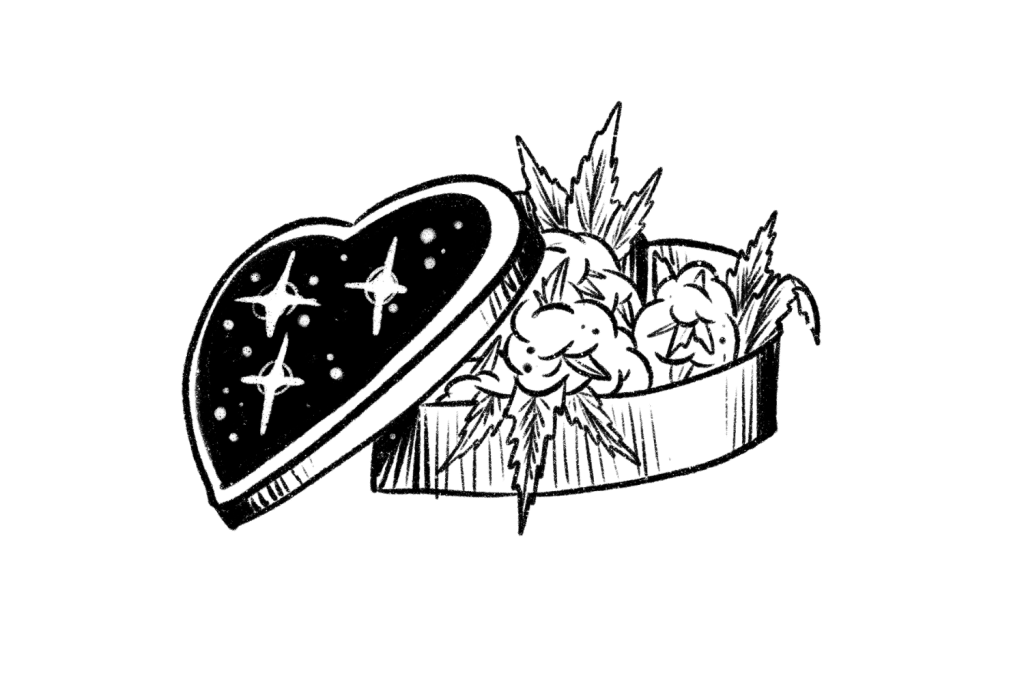
This means that hemp-derived products, including CBD, are legal to cultivate, process, and sell in the United States as long as they contain less than 0.3% THC by dry weight.
Final Thoughts: Cannabis Microdosing
Cannabis microdosing, or consuming small, sub-perceptual amounts of THC or marijuana to produce subtle changes in mood or cognition, has gained popularity in some niche places on the internet of people looking to gain more focus, productivity, and creativity with marijuana use without experiencing the high.
There are many anecdotal accounts of people incorporating microdosing cannabis into their weekly routine with noticeable benefits to their quality of life.
However, it’s important to highlight that there’s not enough scientific evidence of any benefit to cannabis microdosing.
In many places, the possession, use, and distribution of THC and marijuana are illegal, and the use of these substances can carry significant legal consequences. Just look into the laws and regulations governing the possession, use, and distribution of THC and marijuana in your area.
Resources
- Überall, M. A. (2020). A review of scientific evidence for THC: CBD oromucosal spray (nabiximols) in the management of chronic pain. Journal of pain research, 13, 399.
- Van Ameringen, M., Zhang, J., Patterson, B., & Turna, J. (2020). The role of cannabis in treating anxiety: an update. Current opinion in psychiatry, 33(1), 1-7.
- Choi, S., Huang, B. C., & Gamaldo, C. E. (2020). Therapeutic uses of cannabis on sleep disorders and related conditions. Journal of Clinical Neurophysiology, 37(1), 39-49.
- Lima, M. G., Tardelli, V. S., Brietzke, E., & Fidalgo, T. M. (2021). Cannabis and inflammatory mediators. European Addiction Research, 27(1), 16-24.
- Wade, D. T., Robson, P., House, H., Makela, P., & Aram, J. (2003). A preliminary controlled study to determine whether whole-plant cannabis extracts can improve intractable neurogenic symptoms. Clinical rehabilitation, 17(1), 21-29.
- Fadiman, J., & Korb, S. (2019). Might microdosing psychedelics be safe and beneficial? An initial exploration. Journal of psychoactive drugs, 51(2), 118-122.
- Zou, S., & Kumar, U. (2018). Cannabinoid receptors and the endocannabinoid system: signaling and function in the central nervous system. International journal of molecular sciences, 19(3), 833.Chicago
- Childs, E., Lutz, J. A., & de Wit, H. (2017). Dose-related effects of delta-9-THC on emotional responses to acute psychosocial stress. Drug and alcohol dependence, 177, 136-144.
- Nallathambi, R., Mazuz, M., Ion, A., Selvaraj, G., Weininger, S., Fridlender, M., … & Koltai, H. (2017). Anti-inflammatory activity in colon models is derived from δ9-tetrahydrocannabinolic acid that interacts with additional compounds in cannabis extracts. Cannabis and cannabinoid research, 2(1), 167-182.

